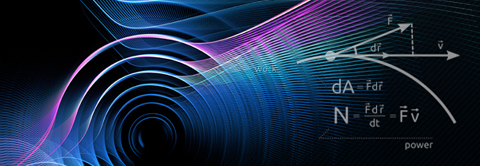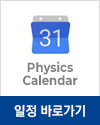Cathodoluminescence for nanophotonics: Applications to plasmonic bandgap materials and perovskite semiconductors
2024.08.07 10:54
| 날짜 | 2024-08-16 11:00 |
|---|---|
| 연사 | |
| 장소 | E6 1322 (no zoom broadcasting) |
Abstract: Cathodoluminescence (CL) is a powerful imaging technique to visualize emitters with a high spatial resolution far beyond the diffraction limit. Electron beams are truly “white” excitation sources that can excite coherent and incoherent light emission in any frequency range, covering a variety of nanophotonic materials such as photonic crystals and plasmonic resonators, and optoelectronics materials including wide-gap semiconductors. In this talk, I will introduce three cutting-edge analysis examples that take advantage of the strengths of CL.
The first topic is topological plasmonic waveguides. Valley polarization has recently been adopted in optics, offering robust waveguiding and angular momentum sorting. The success of valley systems in photonic crystals suggests a plasmonic counterpart that can merge topological photonics and topological condensed matter systems, for instance, two-dimensional materials with the enhanced light-matter interaction. However, a valley plasmonic waveguide with a sufficient propagation distance in the near-infrared (NIR) or visible spectral range was challenging due to ohmic loss inside the metal. My colleagues and I employed gap surface plasmons for high index contrasting and realized a wide-bandgap valley plasmonic crystal, allowing waveguiding in the NIR–visible range. The edge mode with a propagation distance of 5.3 μm in the range of 1.31–1.36 eV was experimentally confirmed by visualizing the field distributions with a scanning transmission electron microscope CL technique, suggesting a practical platform for transferring angular momentum between photons and carriers in mesoscopic active devices [1]. The second topic is time-correlation CL applied to halide perovskites. Time-resolved or time-correlation CL has an attractive potential to reveal carrier dynamics at the nanoscale. However, halide perovskites, which are promising optoelectronic materials, exhibit significantly different decay dynamics in their CL and photoluminescence (PL). My colleagues and I conducted time-correlation CL measurements of CsPbBr3 using Hanbury Brown-Twiss interferometry and compared them with time-resolved PL. The measured CL decay time was on the order of subnanoseconds and was faster than PL decay at an excited carrier density of 2.1 × 1018 cm–3. Our experiment and analytical model revealed the CL dynamics induced by individual electron incidences, which are characterized by highly localized carrier generation followed by a rapid decrease in carrier density due to diffusion. This carrier diffusion can play a dominant role in the CL decay time for undoped semiconductors, in general, when the diffusion dynamics are faster than the carrier recombination [2].
The last topic is plasmon enhanced luminescence nanoscopically visualized by CL. The extremely broadband excitation characteristics of electron beams can sometimes be detrimental. For example, in emitter-resonator systems, electron beams inevitably excite not only the emitters but also the coherent electromagnetic modes of the resonators. This problem has made it difficult for CL analysis to quantify luminescence from the emitter that enhanced by the resonators. Here, to discriminate incoherent emissions from coherent emissions in integrated emitter-resonator systems, a simple new method utilizing CL saturation is proposed.
The first topic is topological plasmonic waveguides. Valley polarization has recently been adopted in optics, offering robust waveguiding and angular momentum sorting. The success of valley systems in photonic crystals suggests a plasmonic counterpart that can merge topological photonics and topological condensed matter systems, for instance, two-dimensional materials with the enhanced light-matter interaction. However, a valley plasmonic waveguide with a sufficient propagation distance in the near-infrared (NIR) or visible spectral range was challenging due to ohmic loss inside the metal. My colleagues and I employed gap surface plasmons for high index contrasting and realized a wide-bandgap valley plasmonic crystal, allowing waveguiding in the NIR–visible range. The edge mode with a propagation distance of 5.3 μm in the range of 1.31–1.36 eV was experimentally confirmed by visualizing the field distributions with a scanning transmission electron microscope CL technique, suggesting a practical platform for transferring angular momentum between photons and carriers in mesoscopic active devices [1]. The second topic is time-correlation CL applied to halide perovskites. Time-resolved or time-correlation CL has an attractive potential to reveal carrier dynamics at the nanoscale. However, halide perovskites, which are promising optoelectronic materials, exhibit significantly different decay dynamics in their CL and photoluminescence (PL). My colleagues and I conducted time-correlation CL measurements of CsPbBr3 using Hanbury Brown-Twiss interferometry and compared them with time-resolved PL. The measured CL decay time was on the order of subnanoseconds and was faster than PL decay at an excited carrier density of 2.1 × 1018 cm–3. Our experiment and analytical model revealed the CL dynamics induced by individual electron incidences, which are characterized by highly localized carrier generation followed by a rapid decrease in carrier density due to diffusion. This carrier diffusion can play a dominant role in the CL decay time for undoped semiconductors, in general, when the diffusion dynamics are faster than the carrier recombination [2].
The last topic is plasmon enhanced luminescence nanoscopically visualized by CL. The extremely broadband excitation characteristics of electron beams can sometimes be detrimental. For example, in emitter-resonator systems, electron beams inevitably excite not only the emitters but also the coherent electromagnetic modes of the resonators. This problem has made it difficult for CL analysis to quantify luminescence from the emitter that enhanced by the resonators. Here, to discriminate incoherent emissions from coherent emissions in integrated emitter-resonator systems, a simple new method utilizing CL saturation is proposed.
Contact: Yongsoo Yang (yongsoo.yang@kaist.ac.kr)







